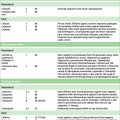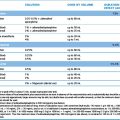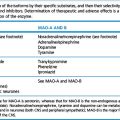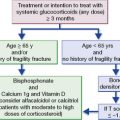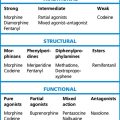Chapter 7 Classification and naming of drugs
In any science there are two basic requirements, classification and nomenclature (names):
• Classification – drugs cannot be classified and named according to a single rational system because the requirements of chemists, pharmacologists and doctors differ.
• Nomenclature – nor is it practicable always to present each drug under a single name because the formulations in which they are presented as prescribable medicines may vary widely and be influenced by commercial considerations.
Generic (non-proprietary) names should be used as far as possible when prescribing except where pharmaceutical bioavailability differences have overriding importance.
Classification
Nomenclature (names)
Any drug may have names in all three of the following classes:
2. A non-proprietary (official, approved, generic) name used in pharmacopoeias and chosen by official bodies; the World Health Organization (WHO) chooses recommended International Non-proprietary Names (rINNs). The harmonisation of names began 50 years ago, and most countries have used rINNs for many years. The USA is an exception, but even here most US National Names are the same as their rINN counterparts. In the UK, there are two exceptions to the policy: adrenaline (rINN epinephrine) and noradrenaline (rINN norepinephrine). Manufacturers are advised to use both names on the product packaging and information literature.
3. A proprietary (brand) name that is the commercial property of a pharmaceutical company or companies. In this book proprietary names are distinguished by an initial capital letter.
A non-proprietary (generic,2 approved) name is given by an official (pharmacopoeia) agency, e.g. WHO.
Three principles remain supreme and unchallenged in importance: the need for distinction in sound and spelling, especially when the name is handwritten; the need for freedom from confusion with existing names, both non-proprietary and proprietary, and the desirability of indicating relationships between similar substances.3
The generic names diazepam, nitrazepam and flurazepam are all of benzodiazepines. Their proprietary names are Valium, Mogadon and Dalmane respectively. Names ending in –olol are adrenoceptor blockers; those ending in –pril are angiotensin-converting enzyme (ACE) inhibitors; and those in –floxacin are quinolone antimicrobials. Any pharmaceutical company may manufacture a drug that has a well-established use and is no longer under patent restriction, in accordance with official pharmacopoeial quality criteria, and may apply to the regulatory authority for a licence to market. The task of authority is to ensure that these generic or multi-source pharmaceuticals are interchangeable, i.e. they are pharmaceutically and biologically equivalent, so that a formulation from one source will be absorbed and give the same blood concentrations and have the same therapeutic efficacy as that from another. (Further formal therapeutic trials are not demanded for these well-established drugs.) A prescription for a generic drug formulation may be written for any officially licensed product that the dispensing pharmacy has chosen to purchase (on economic criteria; see ‘generic substitution’ below).4
Non-proprietary names
Convenience
Pharmacists may supply whatever version they stock,5 whereas if a proprietary name is used they are obliged to supply that preparation alone. They may have to buy in the preparation named even though they have an equivalent in stock. Mixtures of drugs are sometimes given non-proprietary names, having the prefix co– to indicate more than one active ingredient, e.g. co-amoxiclav for Augmentin.6 No prescriber can be expected to write out the ingredients, so proprietary names are used in many cases, there being no alternative. International travellers with chronic illnesses will be grateful for rINNs (see above), as proprietary names often differ from country to country. The reasons are linguistic as well as commercial (see below).
Proprietary names
Generic names are intentionally longer than trade names to minimise the risk of confusion, but the use of accepted prefixes and stems for generic names works well and the average name length is four syllables, which is manageable. The search for proprietary names is a ‘major problem’ for pharmaceutical companies, increasing, as they are, their output of new preparations. A company may average 30 new preparations (not new chemical entities) a year, another warning of the urgent necessity for the doctor to cultivate a sceptical habit of mind. Names that ‘look and sound medically seductive’ are being picked out. ‘Words that survive scrutiny will go into a stock-pile and await inexorable proliferation of new drugs’.7 One firm (in the USA) commissioned a computer to produce a dictionary of 42 000 nonsense words of an appropriately scientific look and sound.
For the practising doctor (in the UK) the British National Formulary provides a regularly updated and comprehensive list of drugs in their non-proprietary (generic) and proprietary names. ‘The range of drugs prescribed by any individual is remarkably narrow, and once the decision is taken to “think generic” surely the effort required is small’.8 And, we would add, worthwhile.
Aronson J.K. Where name and image meet – the argument for adrenaline. Br. Med. J.. 2000;320:506–509.
Chief Medical Officer, Department of Health, Medicines and Healthcare products Regulatory Agency. Change in names of certain medicinal substances. Professional letter of 17 March 2004, pp. 1–6 (available to download as PL CMO (2004)1: change in names of certain medicinal substances from http://www.dh.gov.uk, 2004. (accessed 20.10.11.)
Furberg C.D., Herrington D.M., Psaty B.M. Are drugs within a class interchangeable? Lancet: .1999;354:1201–1204.(and correspondence: are drugs interchangeable?. Lancet. 2000;355:316–317.
George C.F. Naming of drugs: pass the epinephrine please. Br. Med. J: .1996;312:1315.(and correspondence in. Br. Med. J.. 1996;313:688–689.
Jack D.B., Soppitt A.L. Give a drug a bad name. Br. Med. J.. 1991;303:1606–1608.
1 The ATC classification system developed by the Nordic countries and widely used in Europe meets most classification requirements. Drugs are classified according to their anatomical, therapeutic and chemical characteristics into five levels of specificity, the fifth being that for the single chemical substance.
2 The generic name is now widely accepted as being synonymous with the non-proprietary name. Strictly ‘generic’ (L. genus, race, a class of objects) should refer to a group or class of drug, e.g. benzodiazepines, but by common usage the word is now taken to mean the non-proprietary name of individual members of a group, e.g. diazepam.
3 Trigg R B 1998 Chemical nomenclature. Kluwer Academic, Dordrecht, pp. 208–234.
4 European Medicines Agency and US Food and Drug Agency guidelines are available and give pharmacokinetic limits that must be met.
5 This can result in supply of a formulation of appearance different from that previously used. Patients naturally find this disturbing.
6 This is a practice confined largely to the UK. It is unknown in Europe, and not widely practised in the USA.
7 Pharmaceutical companies increasingly operate worldwide and are liable to find themselves embarrassed by unanticipated verbal associations. For example, names marketed (in some countries), such as Bumaflex, Kriplex, Nokhel and Snootie, conjure up in the minds of native English speakers associations that may inhibit both doctors and patients from using them (see Jack & Soppitt 1991 in Guide to further reading).
8 Editorial 1977 British Medical Journal 4:980 (and subsequent correspondence).



